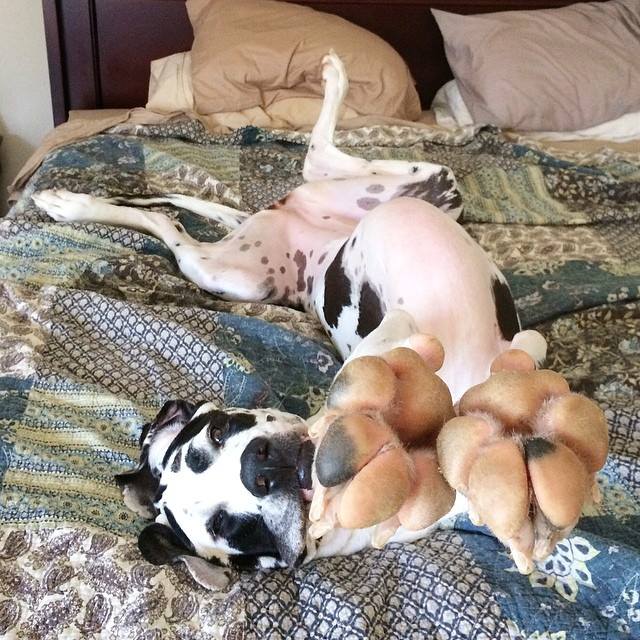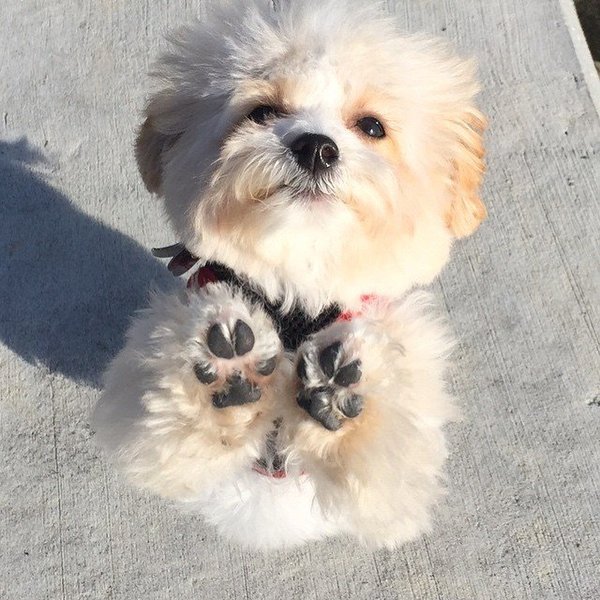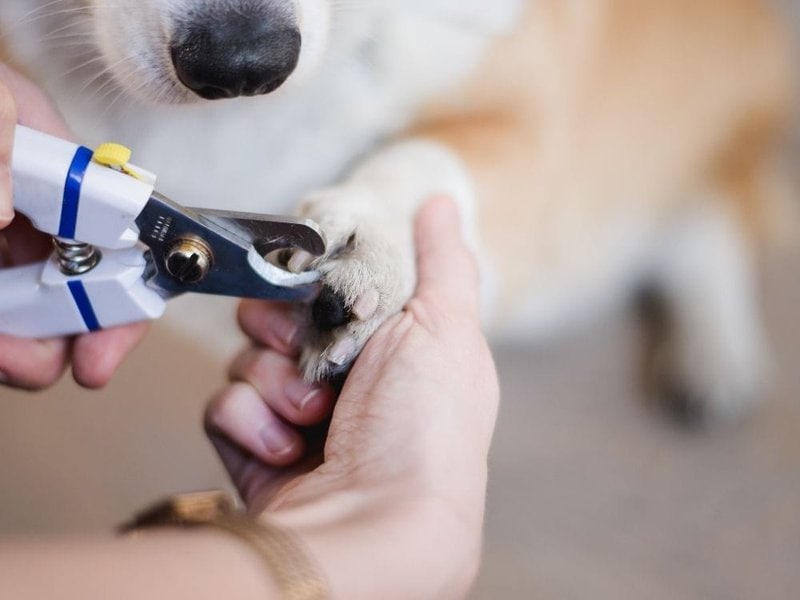Dogs need their nails cut on a regular basis, but how often you should do it depends on your dog’s lifestyle and breed.
In general, most dogs need their nails trimmed every two to four weeks. If you can hear your dog’s nails clicking on the floor, it’s probably time for a trim. You can also tell it’s time to cut your dog’s nails if they start to curve under or grow into the pads of their feet.
Here are a few tips for keeping your dog’s nails in good shape.
How Often Should I Cut My Dog’s Nails?

Short answer?
You should trim your pooch’s nails every four to six weeks. That’s the average for most dogs, anyway. If you start hearing your dog’s nails tapping on the floor as it walks or runs around, then you ought to get the tips filed down or trimmed.
Another thing to keep in mind is that the nails on the front paws grow faster than those on the back feet, which means that you might find yourself trimming the front nails more often.
That answer wasn’t quite short, was it?
Long answer?
It depends. Many factors come into play when it comes to the frequency of nail trimming for your dog, which we’ll detail below.
Factors That Affect The Frequency

Several factors affect how often you should cut your dog’s nails, which are related to every aspect of its life. These factors include:
Behavioral Tendencies
Dogs that spend most of their time playing around, walking on pavement, and doing all kind of dog activities tend to wear down their nails faster than those that aren’t active. If your dog likes to run and play around, you won’t have to trim its toenails so often. Indoor pets, on the other hand, require more attention.
Breed
Some bigger dog breeds, such as boxers, like to spend their time outdoors, while others, like Chihuahuas and other lap dogs, are introverts who’d rather lay on the couch than go outside. Dogs that spend a lot of time outside and love going on walks wear down their nails naturally.
Age
The older a dog gets, the less active it becomes, which is why old pals need more frequent nail cutting than young puppies.
Nail Length
If you leave your dog’s nails unattended for an extended period of time, they tend to grow faster. In that case, make sure to cut the toenails every two to three weeks to wear down the quicksand get it to shrink back. Just remember that extra long nails shouldn’t be cut all at once but rather a small bit at a time.
As you may have guessed by now, how often you should cut your furry friend’s nails mainly depends on its activity, so keep a close eye on that.
When cutting your dog’s nails, remember to include the dew claws, which are also known as the fifth nails. Dew claws are never exposed to friction from touching the ground repeatedly as with the rest of the nails, which is why they tend to grow faster and longer. Dew claws can even get overgrown or worse, ingrown, if they go unattended, which can result in great pain for your dog. That’s why you mustn’t overlook these unique nails when caring for your pet.
Dog Nail Grinding VS Clipping
When it’s time to trim your little (or big) pal’s nails, there are two approaches that you can take: grinding and clipping.
Grinding
To grind your dog’s nails, you’ll have to use a grinder, which is a handheld tool that features a rotating section made of a grinding material such as sandpaper.
The grinders that are used for dog nails are called rotary tools or Dremels, and they wear down the nail through the use of friction. Make sure to get the right pet grinding Dremel and material, as some are designed for other purposes, such as metal cutting.
Pros Of Dog Nail Grinders:
- Grinders produce smooth nails, and they work pretty well for sharp edges. Many dog owners use clippers first to file down the nails then a grinder to round and smoothen them.
- These tools are suitable for thick nails, which can prove to be hard to trim using a clipper.
- Grinders aren’t as scary for dogs. Many mutts get anxious around clippers. If clipping frightens your pooch, you can try grinding as it doesn’t involve any sharp edges.
Cons Of Dog Nail Grinders:
- A Dremel is a loud tool, and that can be scary for your pooch.
- Grinders are known to produce a helluva lot of dust, so make sure to wear proper protection.
- You must be careful not to hit the quick, which is an issue that you can encounter with any nail trimming tool.

Clipping
If you decide to go with a clipper, there are two tools that you can choose from: Guillotine Nail Clippers and Scissor Clippers.
To use a Guillotine Nail Clipper, you need to place your pooch’s nail through a hole, press the handle, and that’s it. This kind is suitable for small to medium dogs, and the blade should be replaced regularly to keep it sharp.
Scissor clippers, as the name indicates, are basically scissors that you can use to trim your pooch’s nails. Their blades feature small indentation to show where you should position the claw. This type is ideal for large dogs, as it offers more force over Guillotine Nail Clippers.
Pros Of Dog Nail Clippers:
- Dog nail clippers are cheap. Try not to skimp on them, though, for the safety and convenience of your dog.
- Clippers are quiet, as opposed to grinders, making them suitable for dogs that fear loud sounds.
- You don’t need batteries nor an electric outlet to use a clipper.
Cons Of Dog Nail Clippers:
- It’s easier to cut the quick using a clipper.
- You may pinch your dog’s quick accidentally.
- Although uncommon, you may end up breaking your pooch’s nail while clipping it.
So, Which Is Better?
Well, there isn’t a definitive answer to that. The right choice for your dog will depend on its own grooming confidence as well as personality. Some mutts get freaked out as soon as they see a scissor, while others don’t do well around loud noises.





